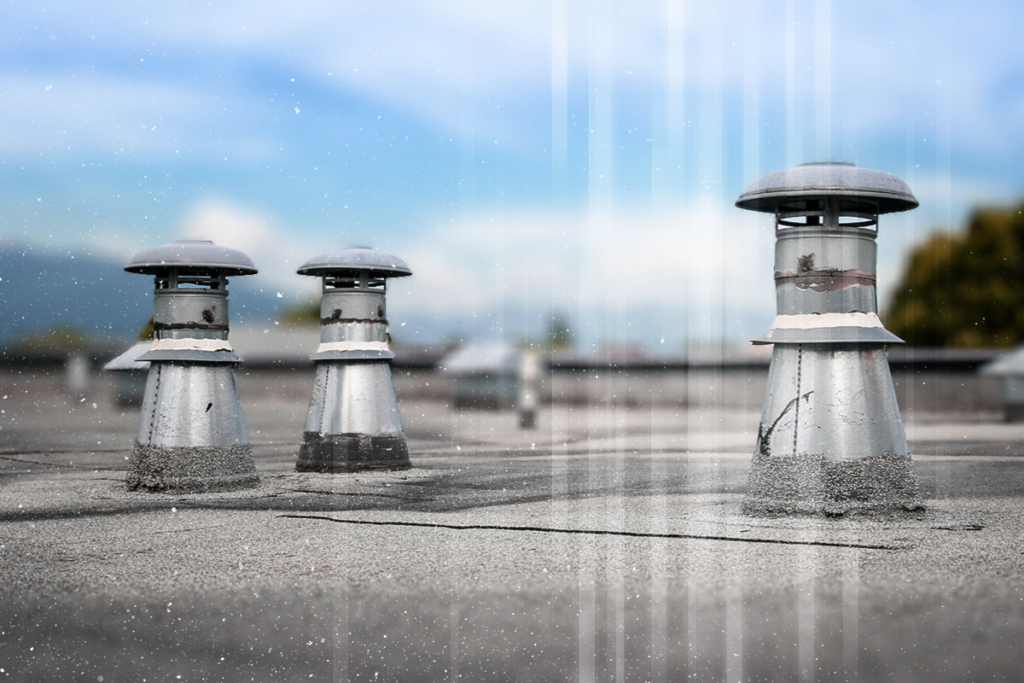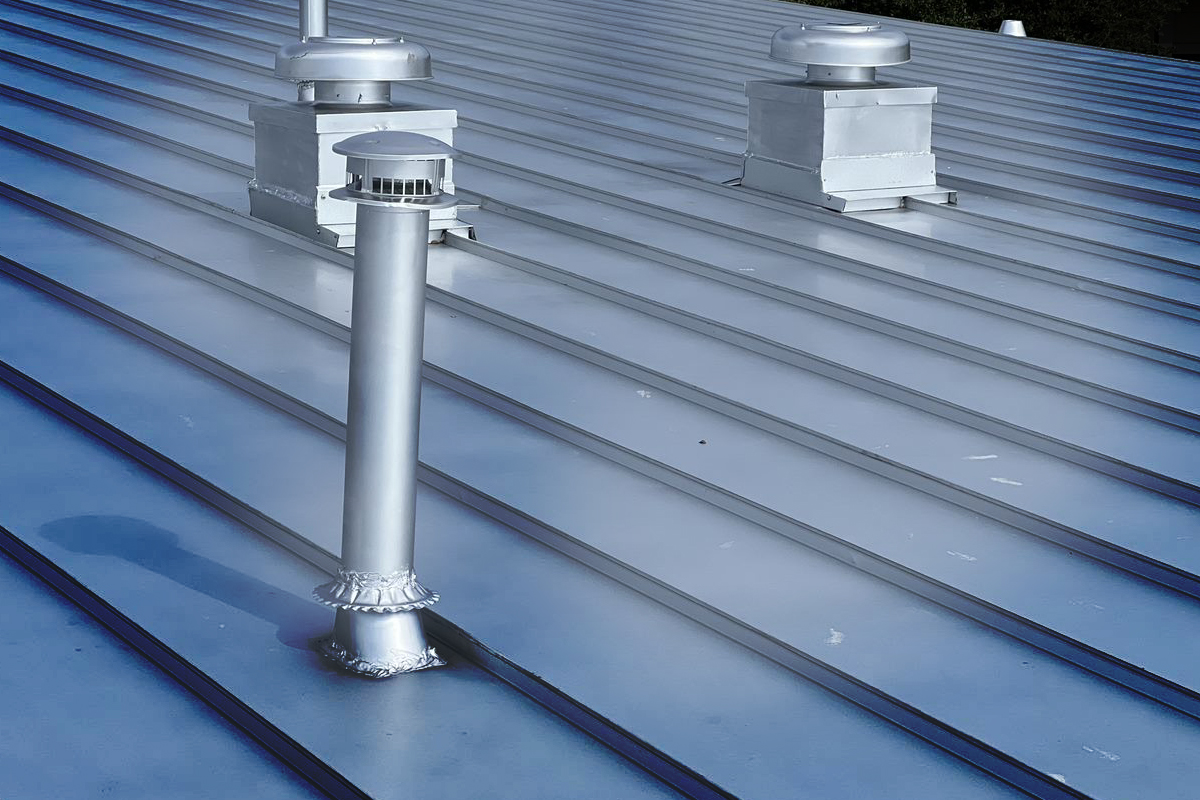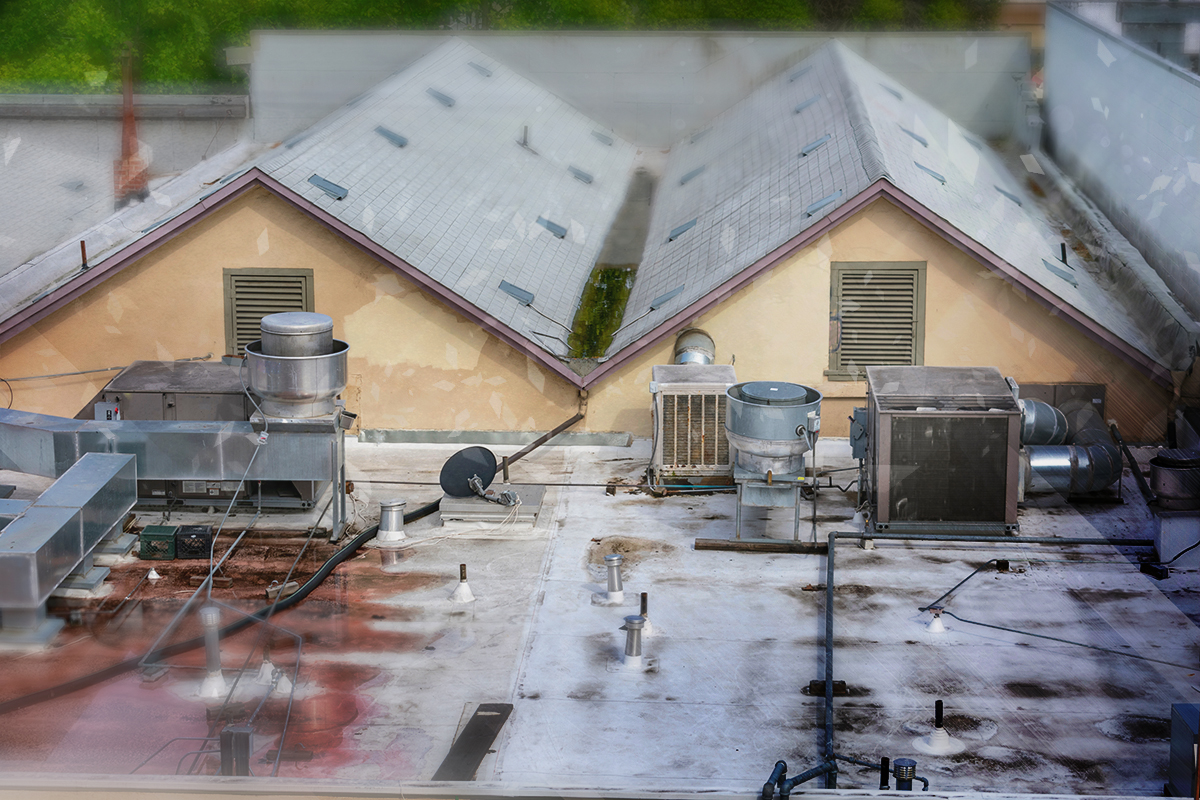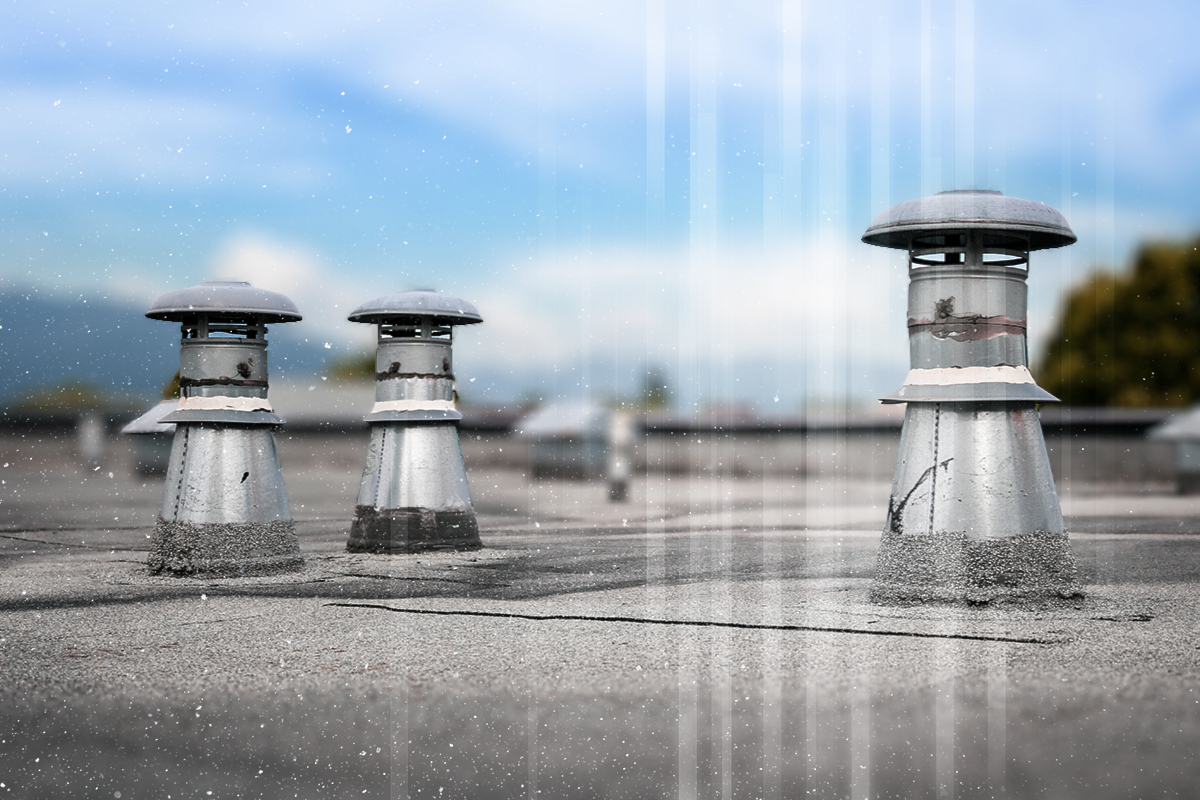Heat Affects Your Roof?

High Temperatures
Yes, heat can affect your roof. High temperatures can cause the roofing materials to expand, causing shingles to buckle or crack. This can lead to water leaks and other related problems. Additionally, UV rays from the sun can cause the materials to break down over time. It is important to properly maintain and care for your roof to prevent damage from heat and other weather elements. Strategies that can help include using appropriate materials for your climate, providing adequate ventilation, and keeping the roof clean and free of debris.
Energy-Efficiency
Implementing energy-efficient roofing materials and techniques can help reduce the heat absorbed by your roof and lower your energy bills. By taking these precautions, you can help extend the lifespan of your roof and protect your home from potential damage.
Some energy-efficient roofing materials and techniques include –
✓ Cool Roofs : These roofs are made from materials that reflect sunlight and heat, rather than absorbing them. Cool roofs can be made from shingles, tiles, or metal, and they come in a variety of colors and styles.
✓ Green Roofs : Green roofs are covered with plants and vegetation that help absorb sunlight and insulate the building from heat. They can be installed on flat or sloped roofs, and they provide numerous environmental benefits in addition to energy efficiency.
✓ Insulation : Proper insulation in your attic or roof space can help prevent heat from escaping in the winter and entering in the summer. This can improve your home’s energy efficiency and reduce your heating and cooling costs.
✓ Ventilation : Adequate ventilation in your attic or roof can help prevent heat buildup by allowing hot air to escape and cooler air to circulate. This can help reduce the strain on your air conditioning system and improve indoor comfort.
✓ Coatings : Certain roof coatings can help reflect sunlight and reduce heat absorption. These coatings can be applied to existing roofs and are available in a variety of colors and formulations.
Thermal Shock
Thermal shock occurs when a sudden and rapid temperature change causes a material to expand or contract quickly, leading to cracks or fractures. This can happen in various applications, including manufacturing processes, cooking, and building materials.
To prevent thermal shock, it is crucial to choose materials that have low thermal expansion coefficients. This means that the material will not expand or contract significantly when exposed to temperature changes. Examples of such materials include quartz, borosilicate glass, and certain ceramics.

Regular Inspections
Longevity & Safety
In conclusion, heat can affect your roof in numerous ways. It is crucial that you take steps to protect your roof from potential damage caused by high temperatures, UV rays, and thermal shock. Regular maintenance, appropriate materials, and adequate ventilation are all critical components to ensuring the longevity and functionality of your roof. By taking the time to properly care for your roof, you can help prevent costly repairs and protect your home from the elements for years to come.
Heat Affects Your Roof?

High Temperatures
Yes, heat can affect your roof. High temperatures can cause the roofing materials to expand, causing shingles to buckle or crack. This can lead to water leaks and other related problems. Additionally, UV rays from the sun can cause the materials to break down over time. It is important to properly maintain and care for your roof to prevent damage from heat and other weather elements. Strategies that can help include using appropriate materials for your climate, providing adequate ventilation, and keeping the roof clean and free of debris.
Thermal Shock
Thermal shock occurs when a sudden and rapid temperature change causes a material to expand or contract quickly, leading to cracks or fractures. This can happen in various applications, including manufacturing processes, cooking, and building materials.
To prevent thermal shock, it is crucial to choose materials that have low thermal expansion coefficients. This means that the material will not expand or contract significantly when exposed to temperature changes. Examples of such materials include quartz, borosilicate glass, and certain ceramics.
Insulation is another important factor in preventing thermal shock. Insulation can reduce heat transfer and prevent hot surfaces from coming into contact with other materials too abruptly. Different types of insulation can be used depending on the application, such as insulation blankets, refractory insulation, and thermal barriers.
Energy-Efficiency
Implementing energy-efficient roofing materials and techniques can help reduce the heat absorbed by your roof and lower your energy bills. By taking these precautions, you can help extend the lifespan of your roof and protect your home from potential damage.
Some energy-efficient roofing materials and techniques include –
✓ Cool Roofs : These roofs are made from materials that reflect sunlight and heat, rather than absorbing them. Cool roofs can be made from shingles, tiles, or metal, and they come in a variety of colors and styles.
✓ Green Roofs : Green roofs are covered with plants and vegetation that help absorb sunlight and insulate the building from heat. They can be installed on flat or sloped roofs, and they provide numerous environmental benefits in addition to energy efficiency.
✓ Insulation : Proper insulation in your attic or roof space can help prevent heat from escaping in the winter and entering in the summer. This can improve your home’s energy efficiency and reduce your heating and cooling costs.
✓ Ventilation : Adequate ventilation in your attic or roof can help prevent heat buildup by allowing hot air to escape and cooler air to circulate. This can help reduce the strain on your air conditioning system and improve indoor comfort.
✓ Coatings : Certain roof coatings can help reflect sunlight and reduce heat absorption. These coatings can be applied to existing roofs and are available in a variety of colors and formulations.

Regular Inspections
Longevity & Safety
In conclusion, heat can affect your roof in numerous ways. It is crucial that you take steps to protect your roof from potential damage caused by high temperatures, UV rays, and thermal shock. Regular maintenance, appropriate materials, and adequate ventilation are all critical components to ensuring the longevity and functionality of your roof. By taking the time to properly care for your roof, you can help prevent costly repairs and protect your home from the elements for years to come. your home and lead to bigger structural issues down the road.

High Temperatures
Yes, heat can affect your roof. High temperatures can cause the roofing materials to expand, causing shingles to buckle or crack. This can lead to water leaks and other related problems. Additionally, UV rays from the sun can cause the materials to break down over time. It is important to properly maintain and care for your roof to prevent damage from heat and other weather elements. Strategies that can help include using appropriate materials for your climate, providing adequate ventilation, and keeping the roof clean and free of debris.
Energy-Efficiency
Implementing energy-efficient roofing materials and techniques can help reduce the heat absorbed by your roof and lower your energy bills. By taking these precautions, you can help extend the lifespan of your roof and protect your home from potential damage.
Some energy-efficient roofing materials and techniques include –
✓ Cool Roofs : These roofs are made from materials that reflect sunlight and heat, rather than absorbing them. Cool roofs can be made from shingles, tiles, or metal, and they come in a variety of colors and styles.
✓ Green Roofs : Green roofs are covered with plants and vegetation that help absorb sunlight and insulate the building from heat. They can be installed on flat or sloped roofs, and they provide numerous environmental benefits in addition to energy efficiency.
✓ Insulation : Proper insulation in your attic or roof space can help prevent heat from escaping in the winter and entering in the summer. This can improve your home’s energy efficiency and reduce your heating and cooling costs.
✓ Ventilation : Adequate ventilation in your attic or roof can help prevent heat buildup by allowing hot air to escape and cooler air to circulate. This can help reduce the strain on your air conditioning system and improve indoor comfort.
✓ Coatings : Certain roof coatings can help reflect sunlight and reduce heat absorption. These coatings can be applied to existing roofs and are available in a variety of colors and formulations.
Thermal Shock
Thermal shock occurs when a sudden and rapid temperature change causes a material to expand or contract quickly, leading to cracks or fractures. This can happen in various applications, including manufacturing processes, cooking, and building materials.
To prevent thermal shock, it is crucial to choose materials that have low thermal expansion coefficients. This means that the material will not expand or contract significantly when exposed to temperature changes. Examples of such materials include quartz, borosilicate glass, and certain ceramics.

Regular Inspections
Longevity & Safety
In conclusion, heat can affect your roof in numerous ways. It is crucial that you take steps to protect your roof from potential damage caused by high temperatures, UV rays, and thermal shock. Regular maintenance, appropriate materials, and adequate ventilation are all critical components to ensuring the longevity and functionality of your roof. By taking the time to properly care for your roof, you can help prevent costly repairs and protect your home from the elements for years to come.
Heat Affects Your Roof?

High Temperatures
Yes, heat can affect your roof. High temperatures can cause the roofing materials to expand, causing shingles to buckle or crack. This can lead to water leaks and other related problems. Additionally, UV rays from the sun can cause the materials to break down over time. It is important to properly maintain and care for your roof to prevent damage from heat and other weather elements. Strategies that can help include using appropriate materials for your climate, providing adequate ventilation, and keeping the roof clean and free of debris.
Thermal Shock
Thermal shock occurs when a sudden and rapid temperature change causes a material to expand or contract quickly, leading to cracks or fractures. This can happen in various applications, including manufacturing processes, cooking, and building materials.
To prevent thermal shock, it is crucial to choose materials that have low thermal expansion coefficients. This means that the material will not expand or contract significantly when exposed to temperature changes. Examples of such materials include quartz, borosilicate glass, and certain ceramics.
Insulation is another important factor in preventing thermal shock. Insulation can reduce heat transfer and prevent hot surfaces from coming into contact with other materials too abruptly. Different types of insulation can be used depending on the application, such as insulation blankets, refractory insulation, and thermal barriers.
Energy-Efficiency
Implementing energy-efficient roofing materials and techniques can help reduce the heat absorbed by your roof and lower your energy bills. By taking these precautions, you can help extend the lifespan of your roof and protect your home from potential damage.
Some energy-efficient roofing materials and techniques include –
✓ Cool Roofs : These roofs are made from materials that reflect sunlight and heat, rather than absorbing them. Cool roofs can be made from shingles, tiles, or metal, and they come in a variety of colors and styles.
✓ Green Roofs : Green roofs are covered with plants and vegetation that help absorb sunlight and insulate the building from heat. They can be installed on flat or sloped roofs, and they provide numerous environmental benefits in addition to energy efficiency.
✓ Insulation : Proper insulation in your attic or roof space can help prevent heat from escaping in the winter and entering in the summer. This can improve your home’s energy efficiency and reduce your heating and cooling costs.
✓ Ventilation : Adequate ventilation in your attic or roof can help prevent heat buildup by allowing hot air to escape and cooler air to circulate. This can help reduce the strain on your air conditioning system and improve indoor comfort.
✓ Coatings : Certain roof coatings can help reflect sunlight and reduce heat absorption. These coatings can be applied to existing roofs and are available in a variety of colors and formulations.

Regular Inspections
Longevity & Safety
In conclusion, heat can affect your roof in numerous ways. It is crucial that you take steps to protect your roof from potential damage caused by high temperatures, UV rays, and thermal shock. Regular maintenance, appropriate materials, and adequate ventilation are all critical components to ensuring the longevity and functionality of your roof. By taking the time to properly care for your roof, you can help prevent costly repairs and protect your home from the elements for years to come. your home and lead to bigger structural issues down the road.
SCHEDULE A FREE INSPECTION
Schedule a Free Inspection

General Contracting Services - Est.1996
Mon – Fri
9am : 5pm
Saturday
10am : 2pm
Sunday
Closed
(833) 324-2699
CONTACT INFORMATION
ECG Corporate Location
TEXAS – COLORADO – OKLAHOMA | ➥ SEE ALL DIVISIONS
ECG COMMERCIAL
TEXT “ECGINFO“ TO “21000”




